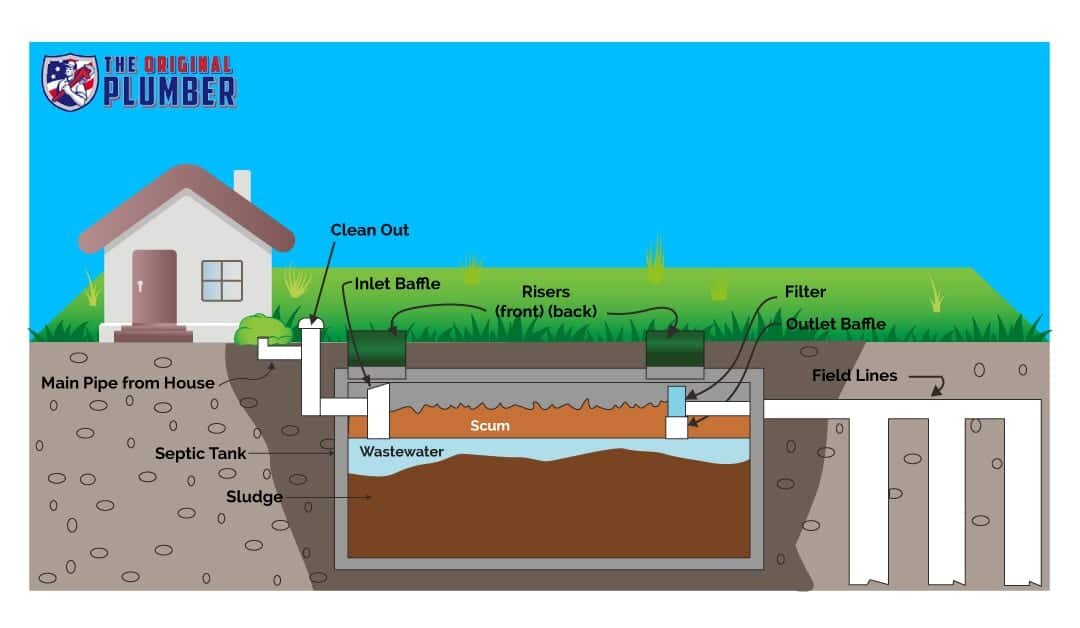Knowing the location of your septic tank lid provides easy access for inspections, pumping, and repairs. But septic lids are often buried or obscured. Here are tips for locating the lid to your septic tank.
Why Find the Septic Tank Lid?
There are several benefits to locating your septic tank access lid:
- Allows quick inspection if you suspect a problem.
- Prevents accidents from traffic or activity over the tank area.
- Provides access for septic professionals to pump out the tank.
- Assists with locating the tank for repairs or replacement.
- Lets you monitor conditions around the tank.
- Helps you direct septic technicians right to the tank.
So while the lid is out of sight, it shouldn’t be out of mind. Finding it periodically is smart septic maintenance.
Locating a Septic Tank Lid
Buried lids can be tricky to find. Here are some methods:
Check Installation Records
Any diagrams or permits from when the septic system was installed will indicate tank location. Compare to the property layout.
Follow Drain Pipes
The lid will be near where the drain pipe exits the home. Follow it out 10-15 feet.
Use a Metal Detector
Most lids contain metal and can be located with a metal detector probe.
Check for Surface Signs
An area where snow melts faster may indicate warmth from the buried tank. An occasional soft spot underfoot could also mark the tank site.
Probe the Ground
Use a thin metal rod to poke into the soil every few feet until you hit the hard lid.
Careful Digging
If necessary, excavate carefully with a shovel around the suspected area to expose the lid.
Hire a Professional
Septic locating services can pinpoint buried tanks or lids with specialized equipment.
Persistence usually leads to success. Just be sure to never blindly dig without an idea of the tank location.
Different Septic Tank Lid Types
Two main kinds of lids are most common:
-
Concrete lids – Heavy and durable but hard to remove without equipment.
-
Plastic lids – Lighter weight, often green or black, easier to handle.
Older tanks may have a wood cover or even no cover at all in rural areas. Be very cautious around these.
Lids typically provide one or two access ports about 12-24 inches wide. Newer lids connect to risers that extend up nearer the surface.
Maintaining and Marking Septic Tank Lids
Once found, maintain the septic lid clear of debris so it’s easy to access in the future. Marking the spot is also smart:
-
Keep grass mowed short in the area.
-
Place a flower pot, stepping stone, or other decorative marker over the site.
-
Use a flag, stake, or other temporary markers to identify the lid location.
-
Avoid building or driving over the tank – the weight can cause damage.
Proper lid maintenance makes your septic technicians happy and keeps your tank accessible!
What If You Can’t Find the Lid?
If you’ve tried extensively but can’t locate your septic tank lid, consider:
-
Hiring a professional locator service to pinpoint it.
-
Renting a metal detector to aid your search.
-
Excavating carefully in small sections until you find evidence of the tank.
-
Reviewing any old permits or installation records for clues.
-
Asking previous property owners if they recall where it was.
Don’t be tempted to blindly or randomly dig without some idea of the general lid location.
When to Call a Septic Professional for Help
While a little DIY detecting can locate most buried septic lids, it’s smart to call in an expert if:
-
You’ve searched extensively without success.
-
Records and physical clues contradict each other.
-
Excavation would be difficult or hazardous.
-
You want to expose the lid for pumping or repairs.
-
The tank needs relocated for additions or landscaping.
-
You plan to decommission a defective, old tank.
Professionals have tools to accurately pinpoint buried tanks without dangerous digging. They can also safely clear and open access ports. Let them handle the heavy work.
Locating the Lid is the First Step
Finding your septic tank lid provides access to perform essential maintenance and repairs that keep your system functioning properly. But don’t stop there:
-
Inspect the exposed tank for defects.
-
Have the tank pumped if needed.
-
Monitor conditions around the tank.
-
Mark and protect the lid location.
-
Keep detailed records for future reference.
-
Address any issues before they become emergencies.
Locating your septic tank access lid puts you back in control!
